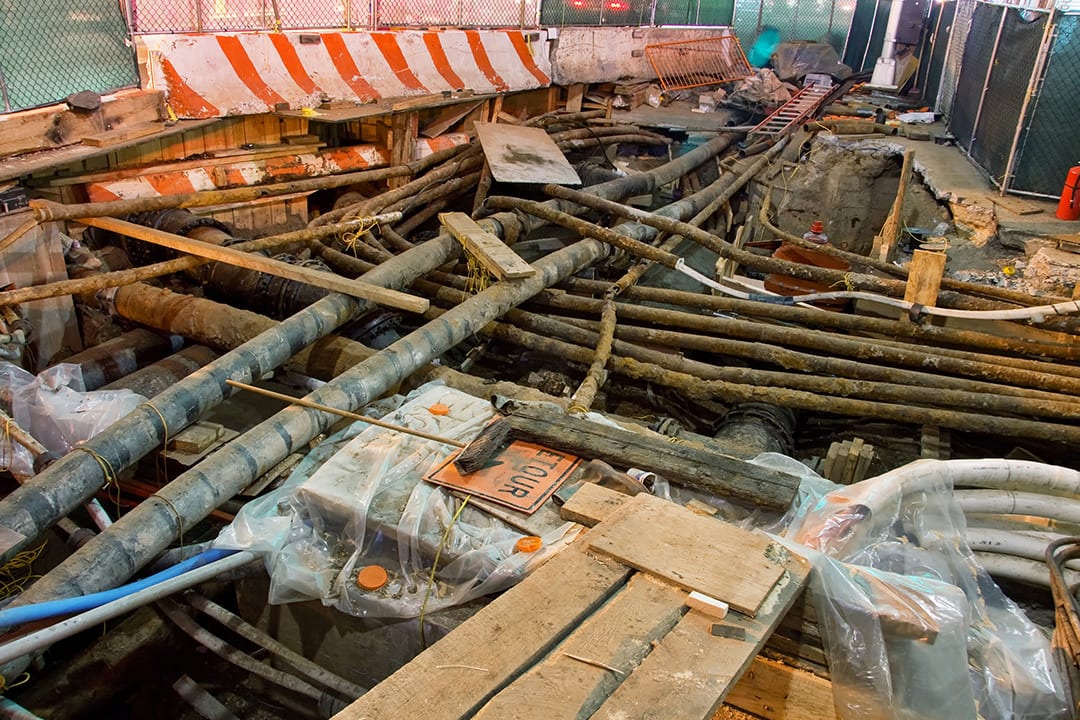Abandoned Underground Utilities Need Standardization

Installation of underground utility facilities is on the rise and likely will not be slowing down. Although, some utilities are forced underground, many are voluntarily choosing to go beneath the surface. This is due to a number of reasons that range from; being more aesthetically acceptable than poles, better protection underground, technological advances in equipment, the deregulation of the telecommunications industry, to the creation of new services made possible by fiber optics. The advent of fiber optic cable has rendered copper cables obsolete in many cases, which are then abandoned in place. The need for buried utility facilities is not slowing down and the number of abandoned utilities is increasing, the result is decreasing available space problem in the Right-of-Way (ROW).
In Overland Park, Kansas the city has a requirement that any application for a ROW work permit must be accompanied with a print/working drawing which includes the proposed work and “all existing utilities” in the work area. Since this requirement was instituted, the most common complaint from a project designer or contactor is that there isn’t enough room on the print to show all existing utilities. This complaint proves that the number of abandoned utilities along with the number of live utilities are becoming too numerous in quantity for the limited space. If a line won’t fit on a print, it is very possible that the actual facility cannot be installed.
Many local and state ordinances, if they exist at all, are vague when it comes to establishing requirements for the future of abandoned utilities. The City of Overland Park has an ordinance requirement that requires the removal of abandoned utilities, however, this law is not generally enforced, primarily because of the high cost of removal. As an example, if a water line was being installed, and in the process an unmarked line was exposed or cut, this could result in substantial project delays. The project is then stalled because the contractor has to figure out the answers to the following questions; who is the line owner, is it “live”, are there other “live” lines nearby.
Technological advances have made underground burial cheaper and quicker than in the past. In addition, too many buried pipelines have reached their life expectancy and need to be replaced. Deregulation of the telecommunications industry and the increasing uses for fiber-optic cable have all increased the demand for underground space. Since strong legislative requirements for abandoned utilities are lacking, most obsolete underground utilities are typically abandoned in place by the owner, who has no economic incentive to do otherwise.
What are the main problems with abandoned utilities?
- Usable available underground space is reduced.
- Repair of adjacent facilities is hindered and therefore slowed.
- Contamination of soil if the line is not properly purged and cleaned upon abandonment.
- Can create confusion when attempting to locate active lines.
- Can cause excavation downtime due to the unknown status of the exposed line.
The one common thread among most states’ practices/policies is that the facility owner should retain ownership of the line and therefore responsibility for locating it. Ownership should not cease when you abandon a facility in place. This “retained ownership” also ensures that if the abandoned line would need to be removed to facilitate new construction, the original owner retains the cost of removal or relocation.
The quick fix in the early 1990’s for problems caused by live and abandoned utilities was Directional Drilling. With the advent of horizontal directional drilling it quickly became easy to “go deep” to avoid existing buried utilities. This quick fix resulted in a “deep zone” full of utility lines. Some lines are so deep, they are very difficult or even impossible to locate or designate. Repairs are equally as challenging. We are now left with an underground that is full at ALL depths.
Since ROW is a finite resource, our only viable option to keep it sustainable for generations to come is abandoned facility removal. Quick fixes are no longer the answer.
The term “Elephant in the Room” is used for good reason; even though you may choose to ignore it, you know it is there. And it can’t be ignored forever. For the previously mentioned reasons, the underground is the favored location for most utilities. For some, the only location. In order to accommodate the needs of the future of utility service delivery – to keep our Rights of Way sustainable and viable for generations to come – abandoned utilities must, at some point, be removed. Not simply ignored. To learn more about abandoned utilities, please contact our experts.
Request a copy of our presentation
